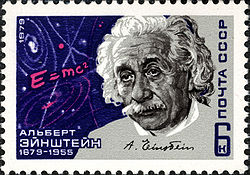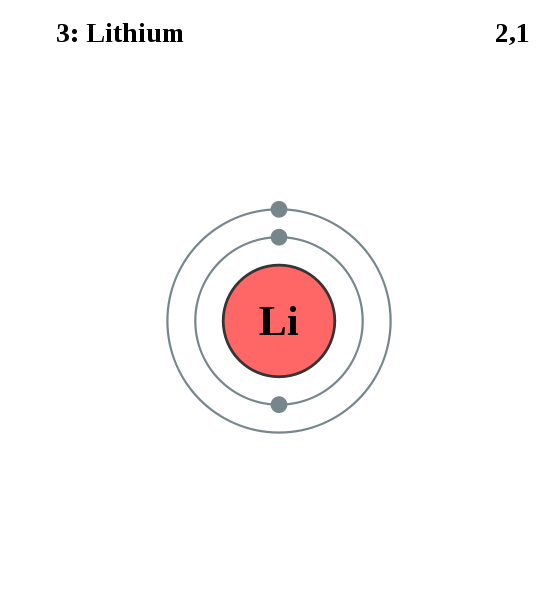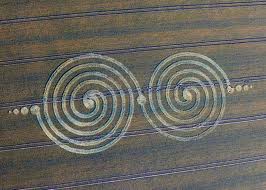
USSR postage stamp dedicated to Albert Einstein
Electromagnetic radiation is not light. If light is photons, then we can block light, which travels in space, simply by using a sheet of paper, but a sheet of paper will not block magnetic forces and electromagnetic forces. For example, you can use a magnet to move ferrous material (iron filings) around, and you can create an electromagnet by running a current through a coil of wire wrapped around an iron core. The electromagnet will be positive on one end, and negative on the other end.
Xrays, which are electromagnetic radiation can pass through solid objects, but are blocked by dense objects such as bone, and metal. Strong Xrays can pass through bone, but may cause damage to muscle tissue if exposure is too long.
One rule is always obeyed regardless of the circumstances: EM radiation in a vacuum always travels at the speed of light, relative to the observer, regardless of the observer's velocity. (This observation led to Albert Einstein's development of the theory of special relativity.)

In this illustration, (above) what is the size of the three spheres (circles) relative to one another? The smallest one (at the top of the line connecting all three is the smallest. Is it about one quarter, or one fifth the size of the other two? The other two are about the same size, but is the bottom one (at the right of the picture) slightly smaller than the one in the middle? The circle in teh middle has something inside it which could be half the size, and is solid, while the one at the top of the picture is hollow, or has a shell around it. What is the relationship between the three circles connectd by a line through their centres? Could it possibly indicate that the middle one is actually inside the top one, and that the bottom one is inside the middle one? If we wanted to illustrate that relationship, how else could we do it?

In this illustration of the Lithium atom, the third in the periodic table of elements (atomic number 3), the nucleus is coloured pink, and it shows three electrons. It has a charge of plus 1 because there is one electron in the outer shell, while the inside shell is full, with two electrons.

The theory was originally termed "special" because it applied the principle of relativity only to the special case of inertial reference frames, i.e. frames of reference in uniform relative motion with respect to each other.[8] Einstein developed general relativity to apply the principle in the more general case, that is, to any frame so as to handle general coordinate transformations, and that theory includes the effects of gravity.
The term is currently used more generally to refer to any case in which gravitation is not significant. General relativity is the generalization of special relativity to include gravitation. In general relativity, gravity is described using noneuclidean geometry, so that gravitational effects are represented by curvature of spacetime; special relativity is restricted to flat spacetime. Just as the curvature of the earth's surface is not noticeable in everyday life, the curvature of spacetime can be neglected on small scales, so that locally, special relativity is a valid approximation to general relativity.[9] The presence of gravity becomes undetectable in a sufficiently small, free-falling laboratory.
The atomic weight is 6.941, compared to Helium which has an atomic weight of 4.002602, and Hydrogen which has an atomic weight of 1.00794. Why is it, do you think, that the weights are 1, 4, and 7, and not 1, 2 and 3, or 1, 4 and 9, or something else? next page